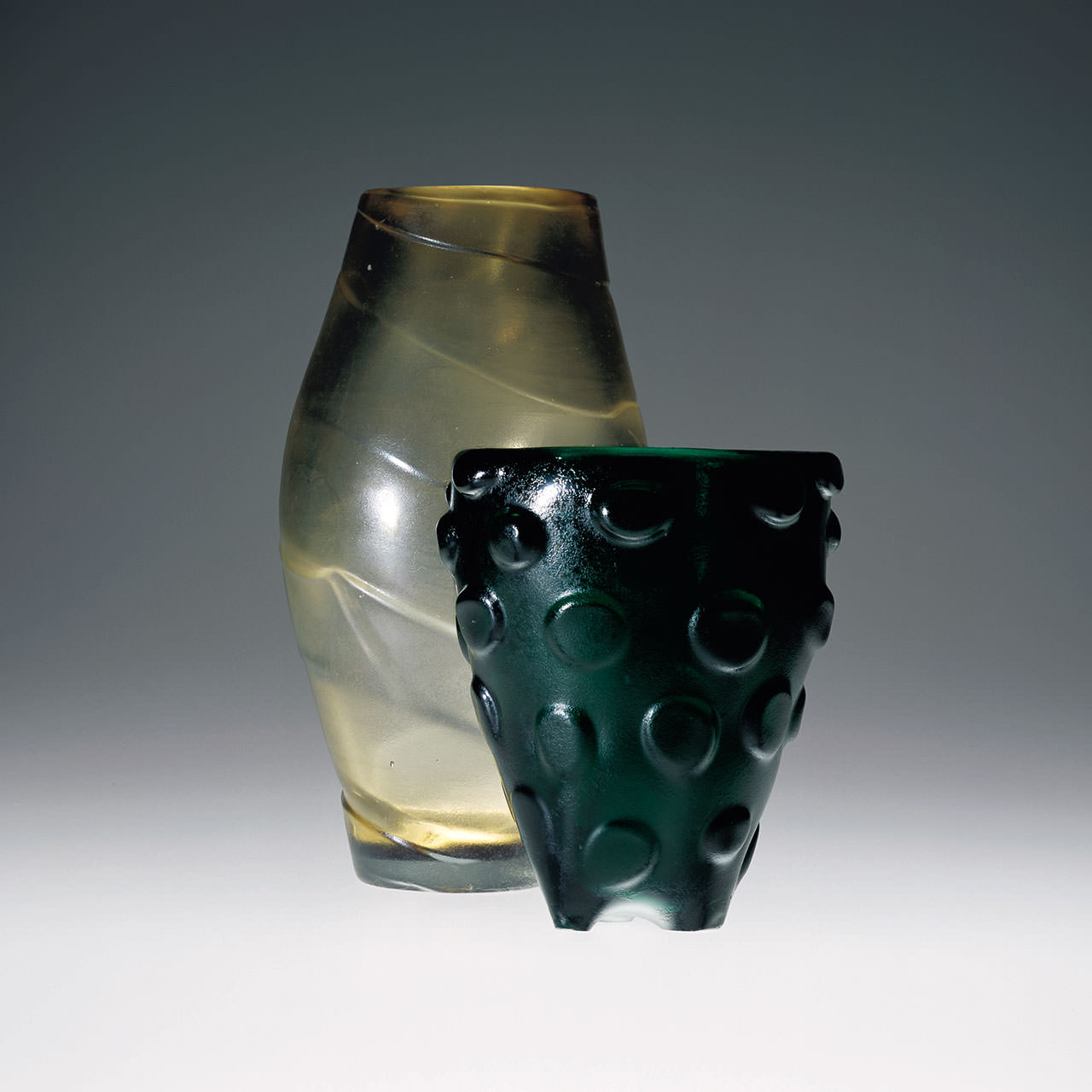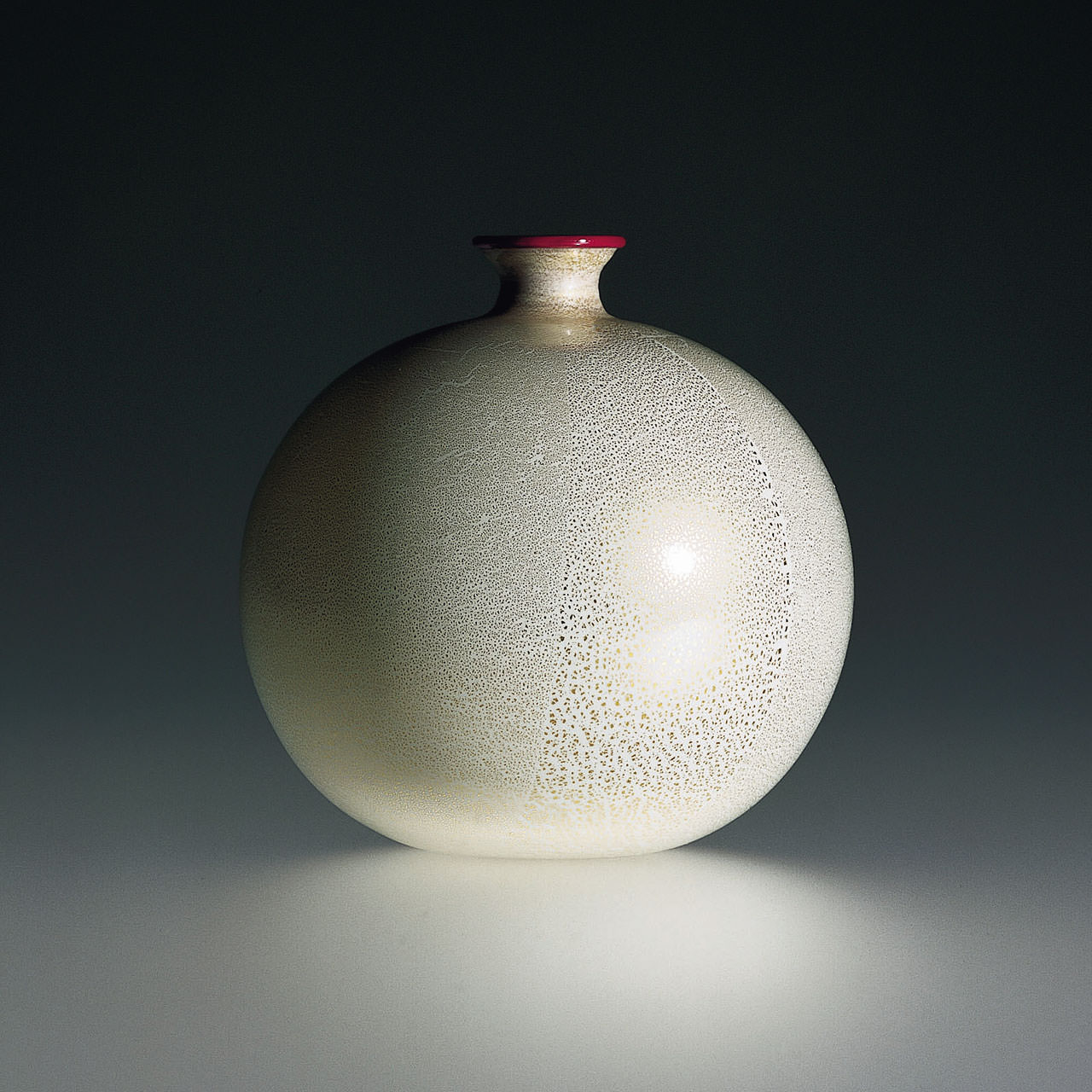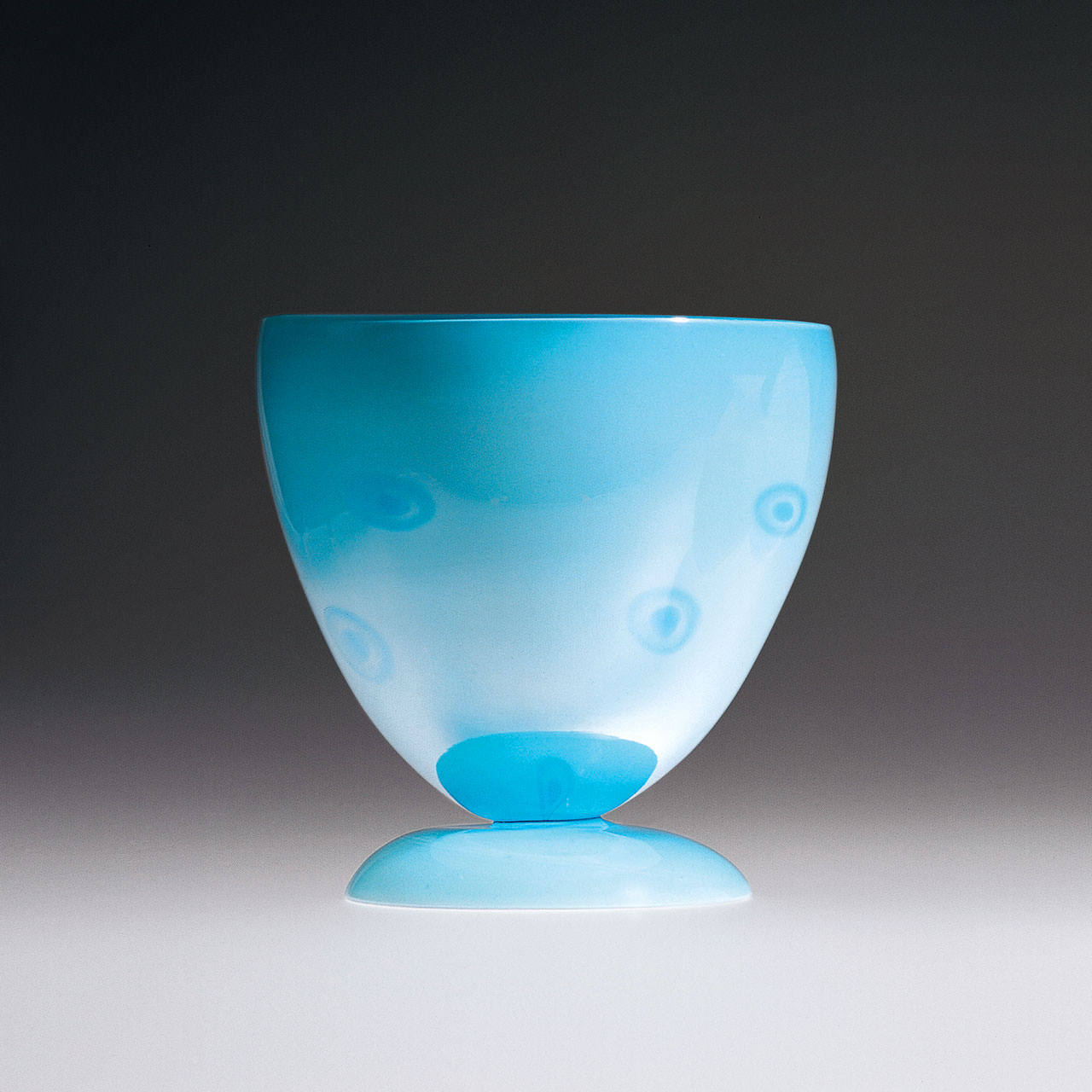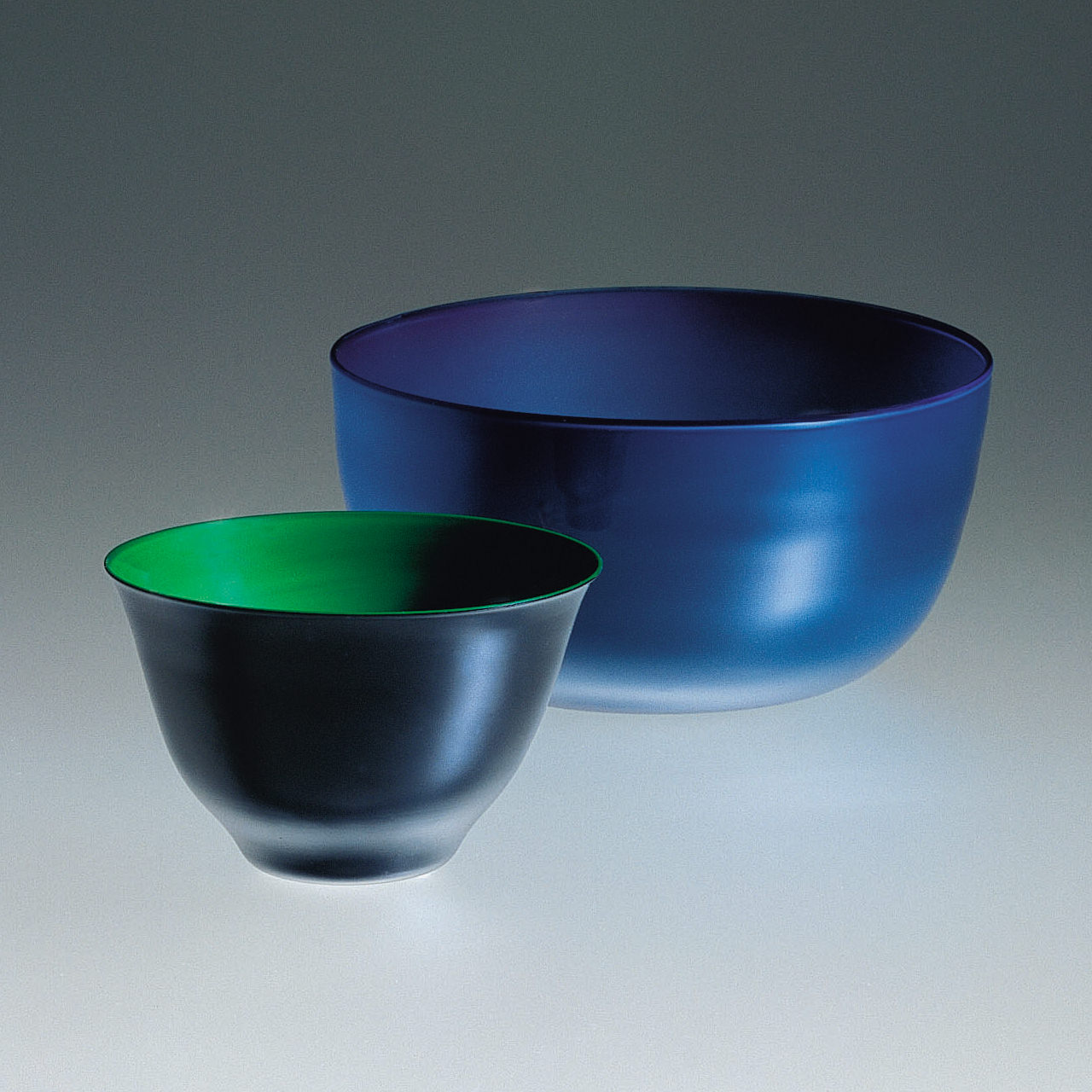
Applicazioni a caldo
This name refers to objects decorated with applications of glass. Adhered during the hot working process onto the surface of the object, these applications may be in relief, as in the case of bugne, or encased within the wall during a successive phase of the work process, as in the case of a fili, a fasce, or pennellate.

Applicazione di foglia d’oro
Done during the work process, this type of decoration is executed by applying very fine leaves of gold or silver around the wall of the object. Once the leaves are applied the piece is blown and a fragmentation of the leaf occurs. Sometimes the pieces are encased with a thin layer of cristallo glass.

Fenicio
Decoration achieved by the application of stripes or threads of colored pasta vitrea, which are then combed with a special tool to obtain a festoon-like pattern. It owes its name to the decorations found on several Phoenician and Egyptian glass works. It may be on the surface in relief or encased within.

Millefiori
Lattimo glass decorated with murrine millefiori encased in the glass during the work process. Once the murrine have been gathered on the surface of the glass, they are cased with a thin layer of clear or lightly colored glass.

Iridato
Glass with an iridescent look achieved by exposing the object during the annealing process to the vapors of tin, titanium, or other metals. The heat radiated by the hot piece creates a thin layer of metallic oxide on the surface of the glass, which will then reflect light in an irregular manner.